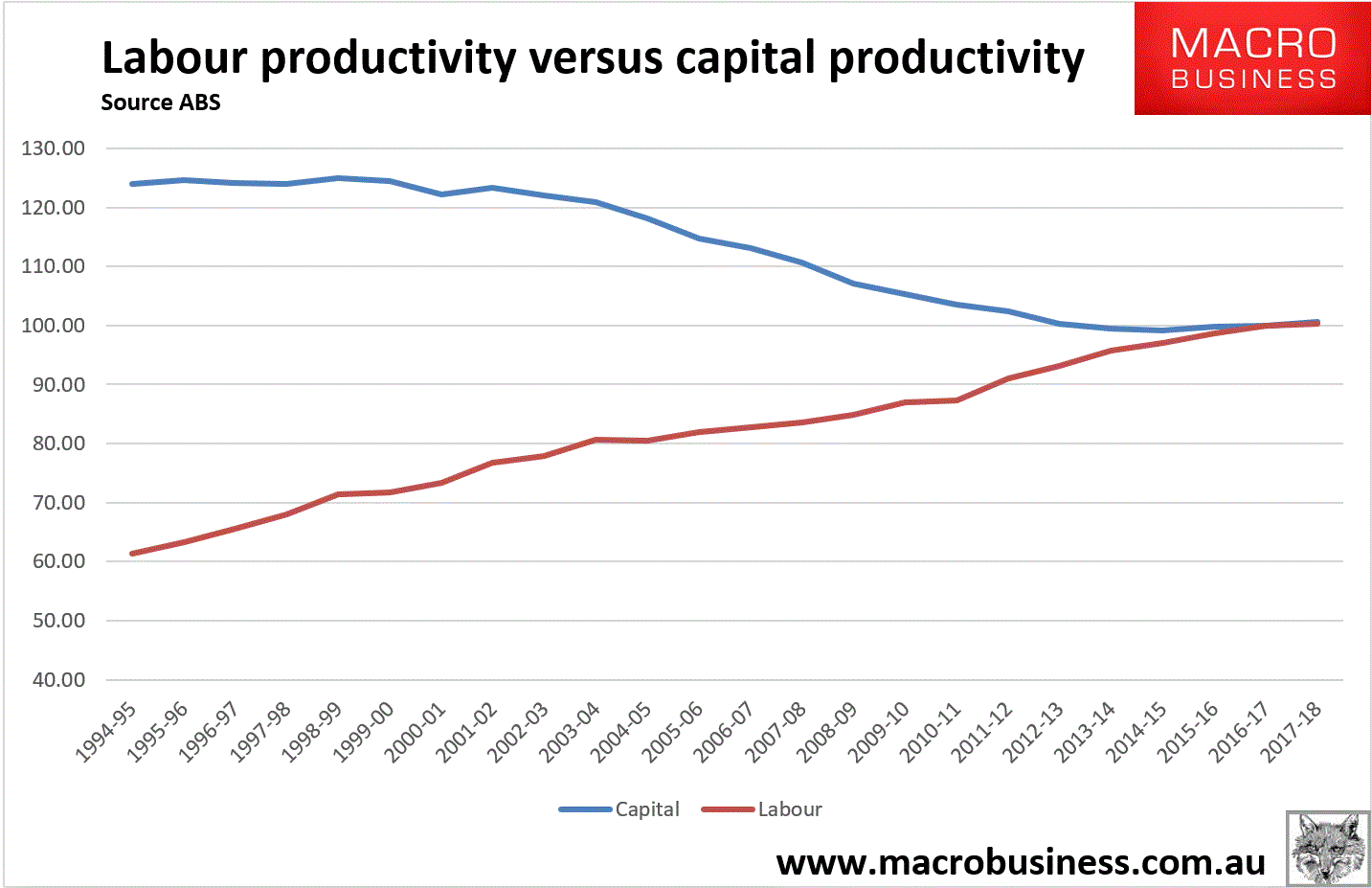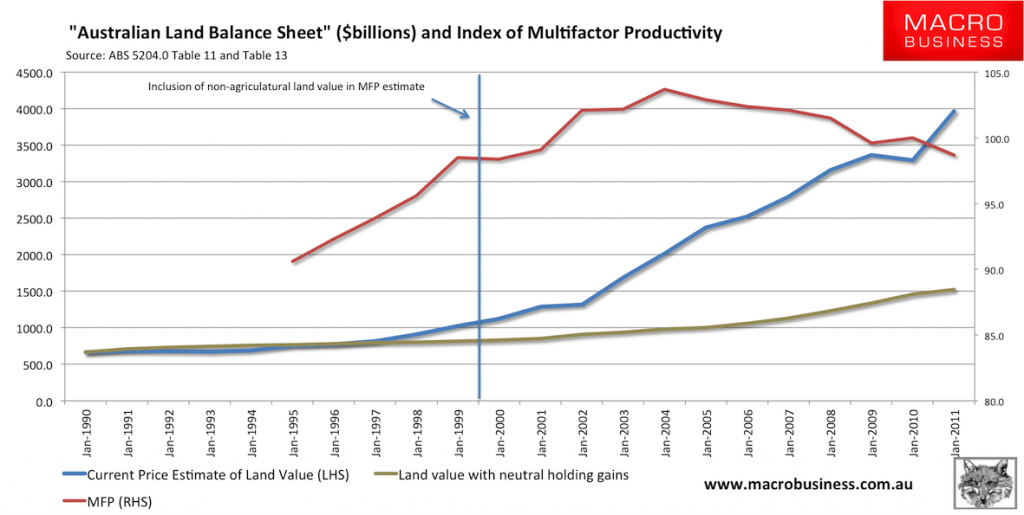The AFR led with an embarrassing story across Easter that shows how low it has sunk in the intellectual stakes:
By forgoing the possibility of creating a dynamic economy of the South Pacific, Shorten has rejected his own political heritage and embraced a higher-tax platform that delights the left of his party.
A Shorten government would levy a top marginal tax rate of 49 per cent, increase the taxes paid by investors in shares and property, and pour more funds into education and health. The efficiencies policymakers have been trying to build into these expensive, subsidised services for decades would not be embraced.
…Shorten’s political heroes, Bob Hawke and Paul Keating, were able to do politics and economic reform. Shorten, a consummate political operator, has shown no interest in using markets or price incentives to help government and business become more efficient and raise national income.
Helping government and business become more efficient is code for lifting productivity. Which is good advice.
The problem for the AFR is that Australia’s productivity challenge is inefficient capital not inefficient labour:

Obviously, then, if one is going to lift productivity with reform then capital efficiency must be the target. The key tax reform policies of the Shorten platform are:
- the wind back of over-generous property tax concessions;
- the wind back of overly generous superannuation tax concessions;
- more progressive tax cuts than those being offered by the Coalition, and
- a larger budget surplus.
These are all explicitly or potentially capital productivity enhancing reforms.
The big one is property tax reform. Why might it lift capital efficiency and incomes? It is capital accumulation that almost exclusively improves labour productivity, and the scale of our per capita productive capacity. Having more, and better, machinery, buildings, infrastructure networks and other capital equipment, is what enables each person to be more productive. Using better machines, for example, can improve how many meters of road can be laid by a small team of workers in one day, and the quality and durability of the resulting surface. As the economy accumulates capital, all parts of production require less labour per output. It is one of the main reasons the agricultural sector requires such a small workforce.
Labour productivity is a measure of output, usually GDP, divided by labour input, either in per employed person, per working hour, or per capita. But when you add capital to produce Multi-factor productivity (MFP), it is a measure of output divided by the sum of inputs of labour and capital, including land.
As my colleague, Dr Cameron Murray, observed long ago, when land values significantly exceed inflation, which has especially been the case since 2001, the capital stock component in the denominator of the MFP calculation increases. We can observe in the chart below the rise in the value of the land balance sheet value against the estimate of MFP, and indeed against an estimate of the land balance if land values simply tracked inflation. Quite clearly, from about 2002 onwards the abnormal increase in the value of land lead to a flattening and falling estimate of MFP. More telling is that fall in all land asset values in 2009 lead immediately to an increase in the MFP measure, only for the next wave of land price escalation, especially FHOG stimulated residential land, to cause a deterioration in MFP during 2011.

In short, since the Millennium, Aussie capital has been sucked into a ceaseless land and property bubble that has crowded out efficient capital investment. Put another way, capital has been grotesquely mis-allocated for two decades.
Sure, there have been other forces at work in the decline of capital productivity. Energy and mining have mis-allocated a lot of capital and the rise of capital-light services is a part of it too.
But the big one is the land bubble. And Labor’s property tax reform is all about reversing that trend by removing the subsidies for speculation introduced by Peter Costello in 1999.
Moreover, the same arguments apply to Labor’s other major reforms. Super tax concessions obviously suck capital away from investment and towards the unproductive lifestyles of the aged. There is no evidence that lifting the marginal tax rate for the wealthy deters investment. In fact, it may boost it. Why hold onto highly taxed income if it can attract a better return through capital deepening? A larger Budget surplus implies a larger private sector. Surely the AFR would not object to that on efficiency grounds?
Yes, there is vastly more that must be done to lift Australian MFP: energy reform, GST and income tax reform, horizontal fiscal imbalance reform, competition reform, innovation reform, big immigration cuts and repair to the education system etc, etc.
But each of these has losers to the benefit of the wider economy. And the wider media, led by the voodoo “businomics” promulgated by the Murdoch press and the AFR, has become a specialist in amplifying the voices of those losing interests over and above the good of the economy. In particular in this election, the AFR has done everything in its power to prevent Labor’s key reforms to property and super concessions that can unleash an historic new wave of capital efficiency and income gains. Need we even mention that both are owned in conjunction with real estate operations that will be losers under the reform.
Bob Hawke and Paul Keating would be fiercely proud of Bill Shorten and Chris Bowen going head on with these titanic bludging bosses for the good of the nation.

